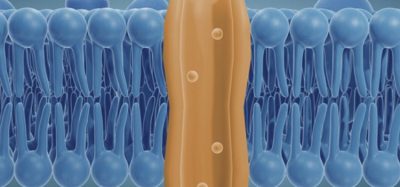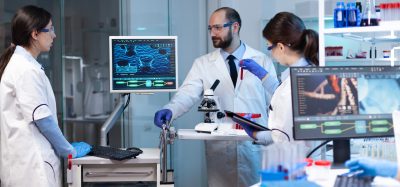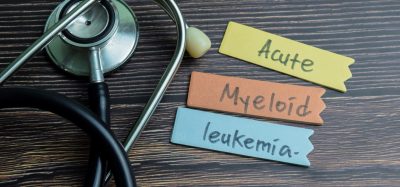Fibroblast mapping reveals potential universal drug targets
Posted: 24 September 2025 | Drug Target Review | No comments yet
Scientists have mapped the diversity of fibroblasts and discovered how ‘rogue’ fibroblasts drive multiple diseases, revealing drug targets that could transform treatments across the body.


Researchers have mapped previously underappreciated scaffolding cells in human skin, known as fibroblasts, discovering how these cells go ‘rogue’ in a wide range of diseases. The study highlights fibroblasts’ shared roles across multiple organs and suggests they could serve as universal drug targets.
Discovering the hidden complexity of fibroblasts
Fibroblasts are essential for tissue repair, wound healing and scarring, yet their diversity has been difficult to study. Researchers at the Wellcome Sanger Institute, the Universities of Cambridge and Newcastle and collaborators have combined single-cell sequencing, spatial genomics and machine learning to identify eight distinct types of fibroblasts.
These fibroblasts form unique ‘tissue neighbourhoods’ in the skin, with specific roles that extend across other organs and diseases. Published in, Nature Immunology, the study suggests fibroblasts may provide universal drug targets for conditions ranging from acne and psoriasis to rheumatoid arthritis and inflammatory bowel disease.
Mapping fibroblasts across skin and beyond
The team analysed healthy skin and samples from 23 skin disorders, including psoriasis, lupus, skin cancers, and acne. Using spatial transcriptomic data, which measures gene expression across tissue locations, they mapped fibroblast populations in both normal and diseased skin.
“Our data are freely available, and we provide an online tool that can be used by researchers to map fibroblasts from their own studies, to expand our knowledge on fibroblasts in disease,” said Dr Lloyd Steele, first author at the Wellcome Sanger Institute and University of Cambridge.
The study revealed five fibroblast types in healthy skin, each in distinct tissue neighbourhoods linked to specific functions. The researchers then extended their analysis to other organs, including the gut, lung, and endometrium, in 14 diseases. They found fibroblast populations shared across organs and identified three ‘rogue’ subtypes present in multiple diseases, including scarring, rheumatoid arthritis, lung cancer and inflammatory bowel disease.
Wound-like fibroblasts in disease
The researchers discovered that fibroblasts which recruit immune cells to early skin wounds were also active in inflammatory diseases such as acne and inflammatory bowel disease. This indicates that a wound-like fibroblast state may be used to attract immune cells to tissues in these diseases – which are both associated with scarring.
By mapping disease-specific and shared fibroblasts within tissue neighbourhoods, the study identifies potential universal drug targets.
“Fibroblasts have critical roles in recruiting immune cells to skin tissue and causing scarring, which can result in a range of skin diseases. We lack highly effective treatments to treat scarring in clinical practice, partly because these cells have been poorly understood,” said Dr Steele “Modern technologies now allow us to begin to understand these critical cells in unprecedented detail. We’ve shown for the first time that fibroblasts occupy and maintain distinct anatomical microenvironments in skin tissue in health and disease.”
Artificial intelligence as a scientific tool
The scientists used machine learning to classify and map fibroblasts in healthy skin and many different diseases. In the future, it could potentially be used to query all the different diseases affecting all of the different cell types in the various tissues across the body
“Artificial Intelligence is going to be transformative in how we do science in the next 10 years, and guide how we explore vast datasets and make sense of complexities of the human body,” said Dr Mo Lotfollahi, senior author and Group Leader at the Wellcome Sanger Institute.
Implications for drug development
The findings could streamline drug development by identifying fibroblasts involved in multiple diseases across the body.
“The clinical relevance of our work is huge – it is paradigm-shifting in terms of how we move from understanding the role of individual cell types to uncovering how disease-specific cell types form ‘tissue neighbourhoods’ that mediate inflammation,” said Professor Muzz Haniffa, lead author and Head of Cellular Genomics at the Wellcome Sanger Institute and Professor of Dermatology and Immunology at Newcastle University. “We find the same disease-related fibroblasts involved in several diseases across the body – atopic eczema, inflammatory bowel disease, rheumatoid arthritis – meaning we could find universal therapeutic targets in these cells to treat many diseases. This could save time and money in drug development, and reduce side effects for patients,”
What’s next?
The research team plans to extend this mapping to other cell types across all human tissues. By combining spatial genomics and AI, they hope to identify disease-specific tissue neighbourhoods that can be targeted therapeutically.
Related topics
Artificial Intelligence, Disease Research, Drug Targets, Machine learning, Next-Generation Sequencing (NGS), Sequencing, Translational Science
Related conditions
Acne, Arthritis, inflammatory bowel disease, Psoriasis
Related organisations
the University of Cambridge, the University of Newcastle, the Wellcome Sanger Institute
Related people
Dr Lloyd Steele (Researcher at the Wellcome Sanger Institute & University of Cambridge), Dr Mo Lotfollahi (Group Leader at the Wellcome Sanger Institute), Professor Muzz Haniffa (Head of Cellular Genomics at the Wellcome Sanger Institute and Professor of Dermatology and Immunology at Newcastle University)








